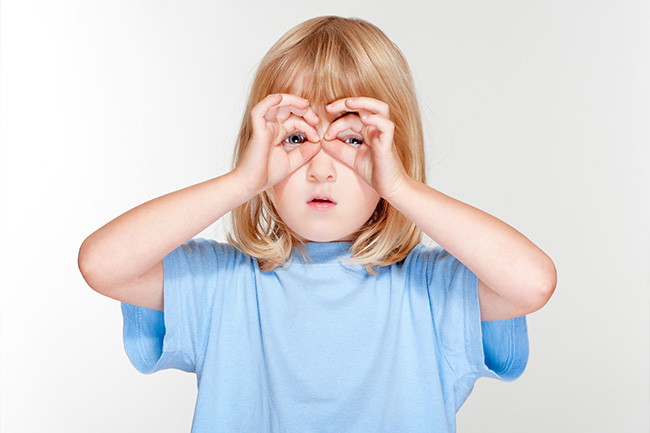
As children grow, their eyes change quickly. They learn so much as they take in the world visually. So, parents work to protect their children’s eyesight from the greatest risks. While genetic conditions and other causes of childhood vision trouble are out of parents’ control, the #1 risk to children’s eyesight, dry eye syndrome, has solutions. It is possible to get sustained dry eye relief for your child!
Although most vision-related concerns are more closely associated with aging, times have changed. Over time, the risks to our children’s eyesight have evolved, too. The excessive use of digital devices contributes to the growing cases of dry eyes among younger patients, enough to affect children’s eyesight.
How Excessive Screen Time Endangers Children’s Eyesight with Dry Eyes
When you use a digital device over an extended period, your blink rate reduces. When you don’t blink often enough, your natural tear film doesn’t replenish enough, which leads to dry eyes. A clear and stable tear film on your eyes’ surfaces is critical to clear vision. This is just as true for adults as it is for children. But the problem is worse for children who tend to spend increasingly long hours staring at digital screens, especially in an era of remote learning during the Covid-19 pandemic.
The increased use of digital devices has created an artificial environment where your eyes have a hard time functioning. And this screen time presents a unique risk to children. As they stare at their screen, blinking less, it also alters the normal dynamics of the blink mechanism. This shift starts a cascade of abnormal meibomian gland (eyelid) secretions because of the low blink rate and incomplete blinks.
Eyesight issues like dry eye are challenging at any age. But they can be incredibly detrimental to children because of the role vision plays in reading for education. Difficulty seeing their books or blackboards can interrupt children’s learning patterns.
Undiagnosed Children’s Dry Eyes
Often children go undiagnosed for Dry Eyes because of digital device use since Dry Eyes are considered an “adult disease.” Children may show dry eye symptoms but not actively complain. Parents should watch for:
- Frequent heavy blinking
- Redness around and in the eyes
- Rubbing the eyes
- Excessive tearing or dryness
- Avoiding sources of light
- Stinging or burning sensation
- Complaints of blurred vision, especially intermittently
- Difficulty reading
- Trouble focusing on computer or mobile screens
- Lack of visual attention
- Sandy or gritty feeling
- A feeling like something is in their eye(s)
- Trouble keeping their eyes open
Parents should watch for the symptoms of dry eyes in their children. If they see any sign of dry eyes, they should take action immediately.
Dr. Michel Guillon
How to Reduce the Risk to Your Children’s Eyesight from Dry Eyes
To reduce the risk to your child’s eyesight from dry eyes, experts suggest these 4 priorities.
- Screen Time Limits
- Teach Healthy Eye Habits
- Get Eye Exams Regularly
- Use an At-Home, Over the Counter, Soothing Treatment for Dry Eye Relief

Screen Time Limits
Set a limit on your children’s daily screen time. Be clear and stick to it. Encourage kids to spend some of their screen-free time outdoors in the sunlight. Set a timer to monitor screen time or install software to turn off the screen automatically.
Creating screen-free zones makes time limits easier to enforce. Eliminating phone use in the car or at the dinner table designates chunks of screen-free time. And no screens in the bedroom at bedtime supports healthy sleep patterns for children and adults.
Teach Healthy Eye Habits for Dry Eye Relief
Teach kids the 20-20-20 rule when they use any device with a screen. Once every 20 minutes, look away for 20 seconds and focus on something 20 feet away.
Screen positioning is essential, too. Make sure your child looks slightly down at the screen, not up. And also, adjust the lighting to eliminate glare.
Get Eye Exams Regularly
Make eye exams part of your child’s regular healthcare schedule. You might be able to tell if your child has tired or irritated eyes, but it’s hard to know if they are developing vision problems. Only a comprehensive eye exam can tell.
Use an At-Home, Over the Counter, Soothing Treatment for Dry Eye Relief
Easy, affordable, over-the-counter (OTC) EverTears® is available without a prescription. The two most highly recommended therapies are combined into one. A self-heating warm compress providing the precise safe temperature to treat dry eyes is combined with a pre-moistened eyelid cleaning pad. Each sterile self-heating pad comes individually wrapped so it can be used anywhere at any time symptoms emerge. By combining multiple treatments into one product for around $1 per use, EverTears® eliminates the need to buy and use multiple products. Right now, a limited number of free samples are available at www.TryEverTears.com for parents who would like to try the product and provide a review.
Many children find using EverTears® combination therapy a welcome relief from dry eye symptoms and even a bit of fun.
This simple, quick, and affordable treatment works in minutes a day. Three steps in about 5 minutes!
- Activate the heat in less than 20 seconds
- Apply the warm compress to the eyelids 2-3 minutes
- Gently wipe the eyelid clean and repeat on the other eye
So, there is no need to risk your children’s eyesight to early symptoms of dry eye syndrome. Genuine dry eye relief, so you don’t have to wonder how to treat your child’s dry eyes anymore!
Share This Article



